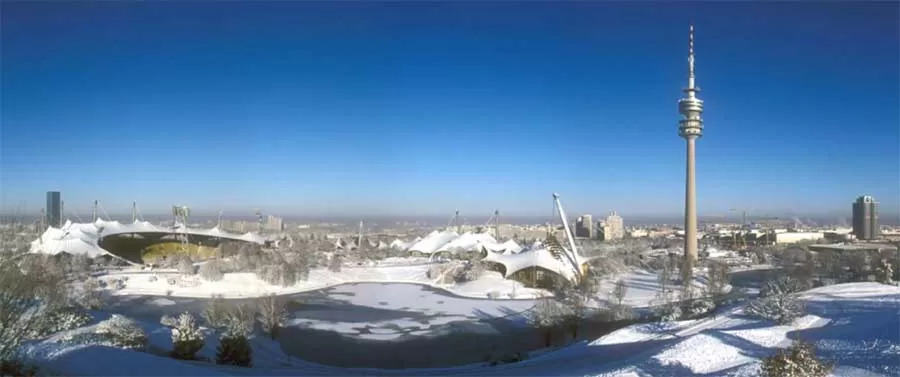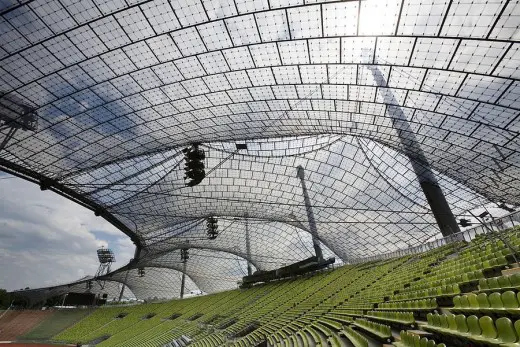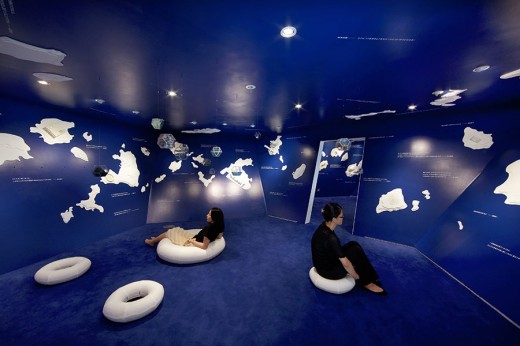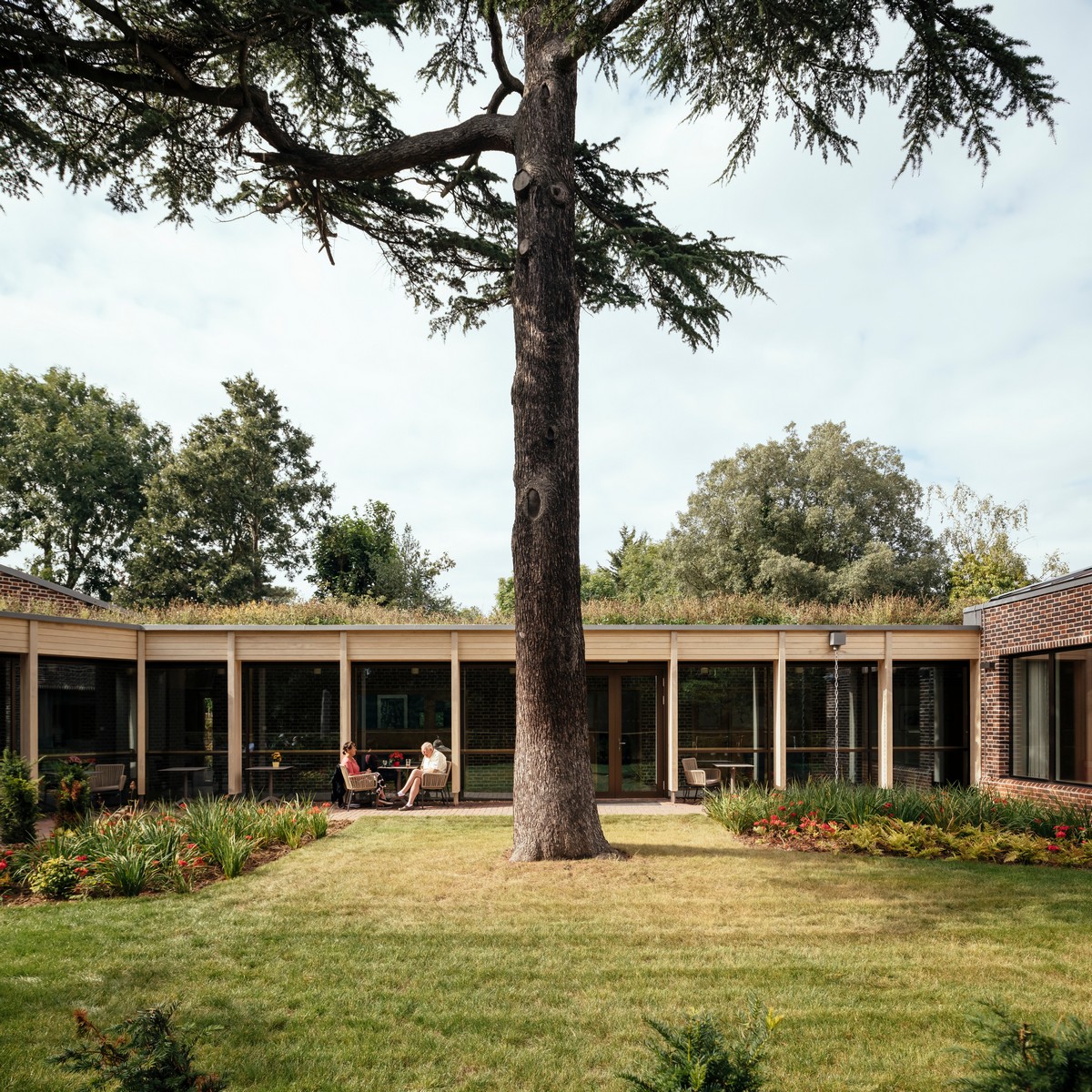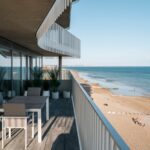Pritzker Prize Winner, Frei Otto, Global Architecture Award, Architects, Designer, Jury News
Pritzker Prize 2015 Winner
Frei Otto Architect: International Architecture Award
Pritzker Prize 2016 Winner – Alejandro Aravena, 13 Jan 2016
11 + 10 Mar 2015
Pritzker Architecture Prize 2015 Winner
Pritzker Prize Winner in 2015
Frei Otto has been selected as the 2015 Pritzker Architecture Prize
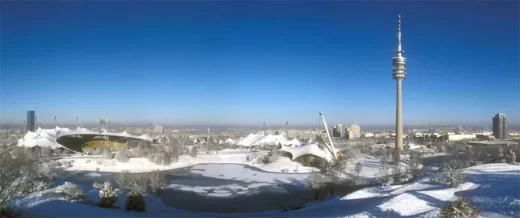
photograph : commons.wikimedia.org
March 10, 2015, Chicago, USA – The 2015 Laureate of the Pritzker Architecture Prize was announced here today, Tuesday, March 10 at 5pm EDT.
Frei Otto died at age of 89 years on Monday. The prize news was brought forward from the expected date of March 23rd.
Key building by Frei Otto:
Munich Oympic Stadium, Oberwiesenfeld, Munich, Germany
Date built: 1972
Design: Frei Otto with Günter Behnisch
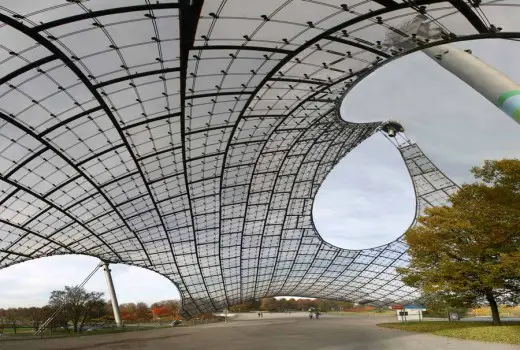
photo : commons.wikimedia.org
March 10 at 17:00 EDT
Frei Otto receives the 2015 Pritzker Architecture Prize
Visionary architect, 89, dies in his native Germany on March 9, 2015
Otto was an architect, visionary, utopian, ecologist, pioneer of lightweight materials, protector of natural resources and a generous collaborator with architects, engineers, and biologists, among others.
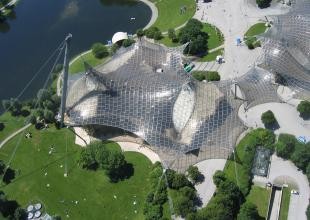
photo © Atelier Frei Otto Warmbronn
Chicago, IL (March 23, 2015) — Frei Otto has received the 2015 Pritzker Architecture Prize, Tom Pritzker announced today. Mr. Pritzker is Chairman and President of The Hyatt Foundation, which sponsors the prize. Mr. Pritzker said: “Our jury was clear that, in their view, Frei Otto’s career is a model for generations of architects and his influence will continue to be felt. The news of his passing is very sad, unprecedented in the history of the prize. We are grateful that the jury awarded him the prize while he was alive. Fortunately, after the jury decision, representatives of the prize traveled to Mr. Otto’s home and were able to meet with Mr. Otto to share the news with him. At this year’s Pritzker Prize award ceremony in Miami on May 15 we will celebrate his life and timeless work.”
Mr. Otto becomes the 40th laureate of the Pritzker Prize and the second laureate from Germany.
The Jury of the Pritzker Architecture Prize selected Mr. Otto as the laureate earlier this year, and shortly thereafter the Executive Director of the prize traveled to Otto’s home and studio in Warmbronn, Germany, near Stuttgart, to deliver the news in person. Learning that he had received the Pritzker Prize, Mr. Otto said: “I am now so happy to receive this Pritzker Prize and I thank the jury and the Pritzker family very much. I have never done anything to gain this prize. My architectural drive was to design new types of buildings to help poor people especially following natural disasters and catastrophes. So what shall be better for me than to win this prize? I will use whatever time is left to me to keep doing what I have been doing, which is to help humanity. You have here a happy man.”
Mr. Otto practiced a holistic and collaborative approach to architecture, working with environmentalists, biologists, engineers, philosophers, historians, naturalists, artists, and other architects. A distinguished teacher and author, Otto pioneered the use of modern lightweight tent-like structures for many uses. He was attracted to them partly for their economical and ecological values. He believed in making efficient, responsible use of materials, and that architecture should make a minimal impact on the environment. Frei Otto was a utopian who never stopped believing that architecture can make a better world for all.
In contrast to the heavy, columned, stone and masonry architecture preferred by the National Socialists in the Germany in which he grew up — Otto’s work was lightweight, open to nature and natural light, non-hierarchical, democratic, low-cost, energy-efficient, and sometimes designed to be temporary.
Munich Oympic Stadium, Oberwiesenfeld, Munich, Germany
Date built: 1972
Design: Frei Otto with Günter Behnisch
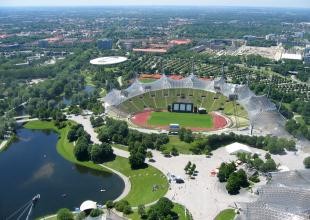
photo © Atelier Frei Otto Warmbronn
He is best known for the roofing for the main sports facilities in the Munich Olympic Park for the 1972 Summer Olympics (with Behnisch + Partner and others), for the German pavilion at the 1967 International and Universal Exposition (Expo 67), the Japan Pavilion at Expo 2000 in Hannover, Germany (in 2000, with Shigeru Ban (2014 laureate of the Pritzker Architecture Prize)), a series of tent structures for German Federal Exhibitions in the 1950’s, and for his work in the Middle East.
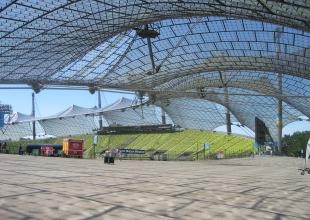
photo © Atelier Frei Otto Warmbronn
The Chair of the jury of the Pritzker Architecture Prize, Lord Peter Palumbo, said today: “Time waits for no man. If anyone doubts this aphorism, the death yesterday of Frei Otto, a titan of modern architecture, a few weeks short of his 90th birthday, and a few short weeks before his receipt of the Pritzker Architecture Prize in Miami in May, represents a sad and striking example of this truism.
His loss will be felt wherever the art of architecture is practiced the world over, for he was a universal citizen; whilst his influence will continue to gather momentum by those who are aware of it, and equally, by those who are not. “Frei stands for Freedom, as free and as liberating as a bird in flight, swooping and soaring in elegant and joyful arcs, unrestrained by the dogma of the past, and as compelling in its economy of line and in the improbability of its engineering as it is possible to imagine, giving the marriage of form and function the invisibility of the air we breathe, and the beauty we see in Nature.”
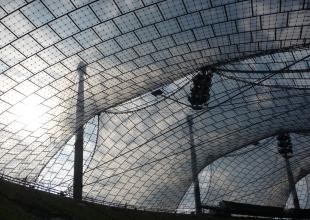
photo © Atelier Frei Otto Warmbronn
The distinguished jury that selected the 2015 Pritzker Laureate consists of its chairman, Lord Palumbo, architectural patron, Chairman Emeritus of the Trustees, Serpentine Galleries, former Chairman of the Arts Council of Great Britain, and former Chairman of the Tate Gallery Foundation; Alejandro Aravena, architect and Executive Director of Elemental in Santiago, Chile; Stephen Breyer, U.S. Supreme Court Justice, Washington, D.C.; Yung Ho Chang, architect and educator, Beijing, The People’s Republic of China; Kristin Feireiss, architecture curator, writer, and editor, Berlin, Germany; Glenn Murcutt, architect and 2002 Pritzker Laureate, Sydney, Australia; Richard Rogers, architect and 2007 Pritzker Laureate, London, United Kingdom; Benedetta Tagliabue, architect and director of EMBT Miralles Tagliabue, Barcelona, Spain; and Ratan N. Tata, Chairman Emeritus of Tata Sons, the holding company of the Tata Group, Mumbai, India. Martha Thorne, Associate Dean for External Relations, IE School of Architecture & Design, Madrid, Spain, is the Executive Director of the Prize.
The 2015 award ceremony will be held in Miami Beach at the New World Center, designed by 1989 Pritzker Prize Laureate Frank Gehry, on May 15, 2015. This marks the first time the ceremony will be in Miami, joining the culturally and historically significant venues around the world. The ceremony will be streamed live on PritzkerPrize.com, the website of the Pritzker Architecture Prize.
About the Pritzker Architecture Prize
The Pritzker Architecture Prize was founded in 1979 by the late Jay A. Pritzker and his wife, Cindy. Its purpose is to honor annually a living architect whose built work demonstrates a combination of those qualities of talent, vision and excellence, which has produced consistent and significant contributions to humanity and the built environment through the art of architecture. The laureates receive a $100,000 grant and a bronze medallion.
Previously the Pritzker Architecture Prize 2015 Laureate was set to be announced March 23.
The Pritzker Architecture Prize honors a living architect or architects whose built work demonstrates a combination of those qualities of talent, vision, and commitment, which has produced consistent and significant contributions to humanity and the built environment through the art of architecture.
The Pritzker family of Chicago established the international prize through their Hyatt Foundation in 1979. The Hyatt Foundation sponsors the prize, which is granted annually. It is often referred to as “architecture’s highest honor.” The award consists of US $100,000 and a bronze medallion, conferred upon the laureate at a ceremony held each year at an important site throughout the world.
Pritzker Architecture Prize 2015 Jury Citation
2015 Laureate of the Pritzker Architecture Prize Jury Citation
Frei Otto, born almost 90 years ago in Germany, has spent his long career researching, experimenting, and developing a most sensitive architecture that has influenced countless others throughout the world. The lessons of his pioneering work in the field of lightweight structures that are adaptable, changeable and carefully use limited resources are as relevant today as when they were first proposed over 60 years ago. He has embraced a definition of architect to include researcher, inventor, form-finder, engineer, builder, teacher, collaborator, environmentalist, humanist, and creator of memorable buildings and spaces.

photo © Atelier Frei Otto Warmbronn
He first became known for his tent structures used as temporary exhibition pavilions. The constructions at the German Federal Garden exhibitions and other festivals of the 1950s were functional, beautiful, “floating” roofs that seemed to effortlessly provide shelter, and then were easily dissembled after the events.
The cable net structure employed for the German Pavilion at Expo 67 in Montreal, prefabricated in Germany and assembled on site in a short period of time, was a highlight of the exhibition for its grace and originality. The impressive large-scale roofs designed for the Munich Olympics of 1972, combining lightness and strength, were a building challenge that many said could not be achieved. The architectural landscape for stadium, pool and public spaces, a result of the efforts of a large team, is still impressive today.
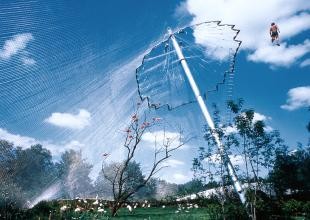
photo © Atelier Frei Otto Warmbronn
Taking inspiration from nature and the processes found there, he sought ways to use the least amount of materials and energy to enclose spaces. He practiced and advanced ideas of sustainability, even before the word was coined. He was inspired by natural phenomena – from birds’ skulls to soap bubbles and spiders’ webs. He spoke of the need to understand the “physical, biological and technical processes which give rise to objects.” Branching concepts from the 1960s optimized structures to support large flat roofs.
A grid shell, such as seen in the Mannheim Multihalle of 1974, shows how a simple structural solution, easy to assemble, can create a most striking, flexible space. The Mechtenberg footbridges, with the use of humble slender rods and connecting nodes, but with advanced knowledge, produce an attractive filigree pattern and span distances up to 30 meters. Otto’s constructions are in harmony with nature and always seek to do more with less.
Virtually all the works that are associated with Frei Otto have been designed in collaboration with other professionals. He was often approached to form part of a team to tackle complex architectural and structural challenges. The inventive results attest to outstanding collective efforts of multidisciplinary teams.
Throughout his life, Frei Otto has produced imaginative, fresh, unprecedented spaces and constructions. He has also created knowledge. Herein resides his deep influence: not in forms to be copied, but through the paths that have been opened by his research and discoveries. His contributions to the field of architecture are not only skilled and talented, but also generous.
For his visionary ideas, inquiring mind, belief in freely sharing knowledge and inventions, his collaborative spirit and concern for the careful use of resources, the 2015 Pritzker Architecture Prize is awarded to Frei Otto.
Pritzker Prize information from The Pritzker Prize
Location: Chicago, Ilinois, USA
Pritzker Architecture Prize Information
Pritzker Prize Architects : main page with current winner information
Pritzker Architecture Prize Winner 2014
2014 Pritzker Architecture Prize Laureate : Shigeru Ban architect
A key building by this architect: Centre Pompidou-Metz, France:
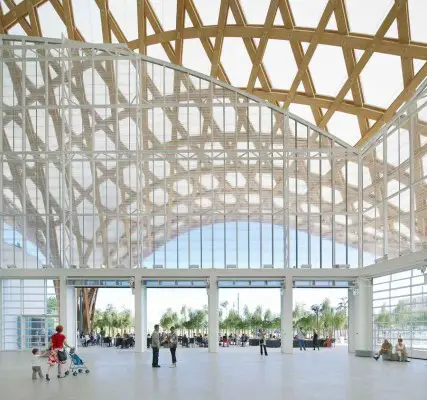
photo : Roland Halbe
Shigeru Ban, a Tokyo-born, 56-year-old architect with offices in Tokyo, Paris and New York, is rare in the field of architecture. He designs elegant, innovative work for private clients, and uses the same inventive and resourceful design approach for his extensive humanitarian efforts. For twenty years Ban has traveled to sites of natural and man-made disasters around the world, to work with local citizens, volunteers and students, to design and construct simple, dignified, low-cost, recyclable shelters and community buildings for the disaster victims.
Pritzker Architecture Prize Winner 2013
2013 Pritzker Architecture Prize Laureate : Toyo Ito Architect
Toyo Ito, a 71 year old architect whose architectural practice is based in Tokyo, Japan, will be the recipient of the 2013 Pritzker Architecture Prize, it was announced today by Thomas J. Pritzker, chairman of The Hyatt Foundation which sponsors the prize. Ito is the sixth Japanese architect to become a Pritzker Laureate — the first five being the late Kenzo Tange in 1987, Fumihiko Maki in 1993, Tadao Ando in 1995, and the team of Kazuyo Sejima and Ryue Nishizawa in 2010.
Toyo Ito architect:

photo courtesy of Toyo Ito & Associates, Architects
Pritzker Prize Citation 2013 – Toyo Ito
Pritzker Architecture Prize – Past Winners
Pritzker Prize 2012 won by architect Wang Shu
Pritzker Prize 2012 winner : Wang Shu
Pritzker Prize 2011 won by architect Eduardo Souto de Moura
Pritzker Prize 2011 Citation from the Jury + The Jury + Eduardo Souto de Moura information
Pritzker Prize 2010 winner : Eduardo Souto de Moura
Pritzker Prize 2010 won by architects SANAA
Pritzker Prize Winner 2010 : SANAA
Pritzker Prize 2009 won by architect Peter Zumthor
Pritzker Architecture Prize Winner 2009 : Peter Zumthor
Zaha Hadid architect : Pritzker Architecture Prize Jury member
Pritzker Prize Winner 2010 : SANAA architects
Pritzker Architecture Prize Laureate 2010 : Citation from the Jury + The Jury
Key Architecture Awards
World Architecture Festival Awards
AR Awards for Emerging Architecture
Comments / photos for the Pritzker Architecture Prize Laureate 2015 – Frei Otto page welcome

